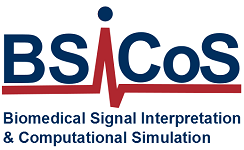-
News
Analysis of electrocardiograms from patients suffering from bradycardia who had an indication for pacemaker implantation
12 May, 2023
Clara Sales, BSiCoS group researcher, presented two abstracts at the EHRA Conference and Julia Ramírez was invited to be part of the jury members
Clara Sales presented two abstracts at the EHRA 2023 conference focused on the analysis of electrocardiograms (ECGs) from patients suffering from bradycardia who had an indication for pacemaker implantation. Patients had been treated with either the conventional right ventricular pacing (RVP) or the recently proposed left bundle branch area pacing (LBBAP).
RVP has been the treatment of choice for patients suffering from bradycardia for the last decades. It has been reported that RVP may lead to left ventricular dysfunction in 20% of patients due to induced ventricular dyssynchrony and can increase the risk for heart failure and atrial fibrillation. Recently, LBBAP has been suggested as a new physiological pacing modality with improved feasibility and safety that can circumvent the limitations of RVP.
The two studies presented by Clara Sales included the analysis of ECGs collected from 134 patients (82 LBBAP, 52 RVP) collected at the Arrhythmia Unit of Lozano Blesa Clinical University Hospital (Zaragoza, Spain), coordinated by Dr. Javier Ramos. Patients were classified into two groups depending on whether they presented physiological or disturbed ventricular conduction before pacemaker implantation.
The first study entitled ‘Ventricular activation comparison between right ventricular and left bundle branch area pacing’ compared the characteristics of the QRS complex, representing ECG electrical depolarization, between the two modes of pacing in both patients with physiological and disturbed conduction. Results showed that ventricular activation was more synchronized after LBBAP than after RVP in both patient groups, suggesting that better clinical outcomes can be expected for LBBAP.
The second study entitled ‘Depolarization-repolarization synchrony after right ventricular and left bundle branch area pacing’ analyzed the relationship between ECG depolarization and repolarization, represented by the QRS complex and the T wave, after pacemaker implantation. Results showed that LBBAP was associated with reduced depolarization-repolarization dyssynchrony compared to RVP for the two investigated patient groups. These findings support lower risk for cardiac arrhythmias in patients treated with LBBAP than in those treated with conventional RVP.
Julia Ramírez was invited to be part of the jury members in the Young Investigation Competition at the European Heart Rhythm Association, as a biomedical engineer representing the ESC Working group on e-Cardiology.
Further information, EHRA Congress 2023 website


